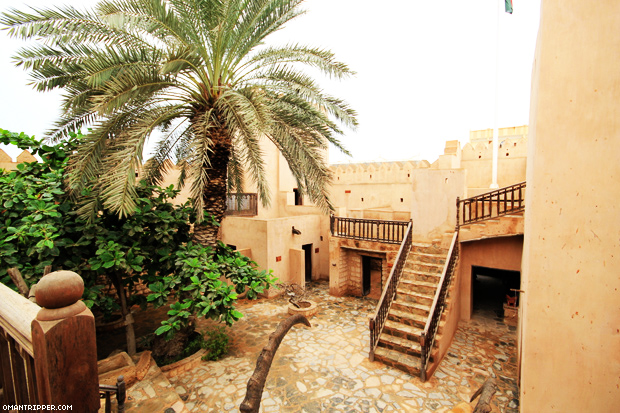How Tourists From All Over The World Get Access To Oman via @Oman_Tourism_UK #adventure
Access to and within Oman is easy and organised. There is an excellent road network with signage in Arabic and English and most tourist sites can now be reached by saloon car.
The more remote mountain and desert areas need a 4-Wheel Drive, which can be hired locally or you can join an organised tour. For longer trips, there are domestic flights with Oman Air from Muscat.
Getting Around Oman: By Air, Car, Bus, Ferry and Camel:
Muscat - Khasab (Musandam)
Khasab - Lima (Musandam) (currently only passengers and cargo)
Shinas - Khasab (launched on 9th May 2012)
Shannah - Masirah (launched on 14th August 2014)
Shinas - Dibba - Khasab (launched on 28th August 2014)
 |
| www.nfc.om |
Public buses, run by the Oman National Transport. Today the company has in the region 200 buses and 320 staff with its headquarters and main operating base in Al Azaiba. There is one major bus station for local and long distance services in central Ruwi.
 |
| www.ontcoman.com |
3- Take a Car Rental:
There’s never been an easier way to fill up the trunk and head out on a completely unique adventure. See some options below:
 |
| https://www.flickr.com/photos/eewei/ |
Some Car Rental options:
| Name | Location | Tel | Fax | |
| Al-Mahaa | Al-Sarooj | 24603376 | 24605502 | mahaa@omantel.net.om |
| Avis | Al-Bustan Palace Hotel | 24703242 | 24700050 | avisoman@omantel.net.om |
| Avis | Intercontinental Hotel | 24601224 | 24700050 | avisoman@omantel.net.om |
| Budget | Muscat Airport | 24510816 | 24798144 | budgetom@omantel.net.om |
| Budget | Ruwi | 24794721 | 24798144 | budgetom@omantel.net.om |
| Europe Car | Holiday Inn Hotel | 24484093 | 24794061 | eurmct@omantel.net.om |
| Europe Car | Muscat Airport | 24521369 | 24794061 | eurmct@omantel.net.om |
| Europe Car | Ruwi | 24700190 | 24794061 | eurmct@omantel.net.om |
| Hertz | Muscat Airport | 24521187 | 24566125 | nttoman@omantel.net.om |
| Hertz | Wattayah | 24566208 | 24566125 | nttoman@omantel.net.om |
| Sixt | Crown Plaza Hotel | 24561427 | 24565968 | tracbest@omantel.net.om |
| Sixt | Muscat Airport | 26846619 | 24566125 | tracbest@omantel.net.om |
| Thrifty | Khuwair | 24489648 | 24482515 | haditha@omantel.net.om |
4- Take a Flight:
Muscat - Salalah. Cool off in Salalah during the Khareef season, which lasts from June to early September.
 |
| www.omanair.com |
5- Take a 4- Wheel Drive vehicles:
A four-wheel drive vehicle is worth renting if you intend to explore the rugged country outside the city.
6- Take a taxi:
Make sure you agree the fare with the driver before commencing your journey.
 |
| commons.wikimedia.org |
| Hotel | Location | One way fare (RO) |
|---|---|---|
| Al Bustan Palace Hotel | Al Bustan | 12.000 |
| Al Falaj Mercure Hotel | Ruwi | 10.000 |
| Chedi Hotel | Al Ghubrah | 8.000 |
| Crown Plaza Hotel, Muscat | Qurum | 10.000 |
| Golden Oasis | Wadi Kabir | 10.000 |
| Golden Tulip | Seeb (Muscat International Airport) | 6.000 |
| Grand Hyatt Muscat | Jawadhart Al Shatti | 8.000 |
| Haffa House | Ruwi | 10.000 |
| Holiday Inn, Al Madinah | Al Madinah | 8.000 |
| Holiday Inn, Muscat | Al Khuwair | 8.000 |
| Majan Hotel | Ghubrah South | 8.000 |
| Muscat Intercontinental Hotel | Jawadhart Al Shatti | 8.000 |
| Oman Diving Centre | Barr Al Jissah | 15.000 |
| Radisson SAS | Al Khuwair | 8.000 |
| Ramada Hotel | Jawadhart Al Shatti | 8.000 |
| Shangri La, Barr Al Jissah Resort & Spa | Barr Al Jissah | 15.000 |
| Sheraton Oman Hotel | Ruwi | 10.000 |
| Area | Approximate distance from Muscat International Airport | One way fare (RO) |
|---|---|---|
| Al-Ghubrah, Azaiba, | 12 km | 8.000 |
| Al-Kuwair, Quram, Madinat as Sultan Qaboos | 20 km | 8.000 |
| Barka | 52 km | 15.000 |
| Nizwa | 140km | 30.000 |
| Qurayyat | 120 km | 24.000 |
| Ruwi, Muttrah | 32 km | 10.000 |
| Sohar | 195 km | 40.000 |
7- Take a camel:
For those that have never sat on a camel, this is an experience not to be missed. Also called the “Ship of the Desert”, camels are a vital part of the Omani Society, for it represents a deeply appreciated and highly valued tradition.
 |
| www.razantravel.com |
Oman is easier to get to than you might think. Over 20 international airlines fly directly to Muscat International Airport, 32 km west of the city centre. Take off from London Heathrow with Oman Air, our national carrier and you will be in Muscat in just 7.5 hours later.
What do you think is the best way to move around Oman? Are there any other ways you'd like to try? We'd love to hear from you.
Please, take a moment to leave your comments below!
---------------------------------------------------------------------------------------------
 Oman Tourism UK is the Official Account for the Oman Ministry of Tourism MBR in The UK & Ireland. Want to be part of our community? Connect with us!
Oman Tourism UK is the Official Account for the Oman Ministry of Tourism MBR in The UK & Ireland. Want to be part of our community? Connect with us!
----------------------------------------------------------------------
Please, take a moment to leave your comments below!
---------------------------------------------------------------------------------------------
 Oman Tourism UK is the Official Account for the Oman Ministry of Tourism MBR in The UK & Ireland. Want to be part of our community? Connect with us!
Oman Tourism UK is the Official Account for the Oman Ministry of Tourism MBR in The UK & Ireland. Want to be part of our community? Connect with us!















.jpg)






